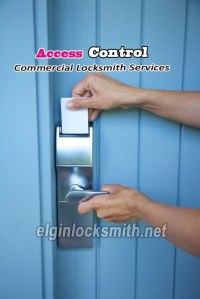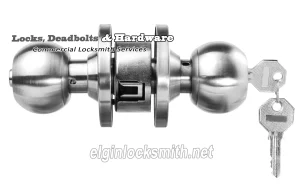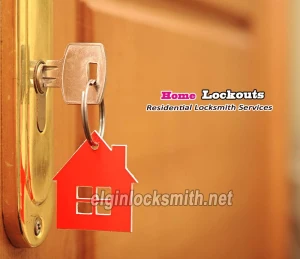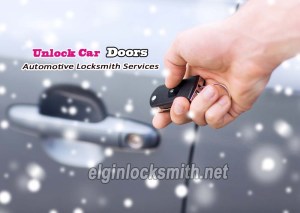
Are you in trouble with your safe? If you can’t get your safe open, of course it never happens at a convenient time, and it’s so unnerving. But don’t let it get you down. Generally, when a safe fails, it stays locked. Here are some common reasons your safe is malfunctioning. There are numerous steps you can take before you’ll have to hire a safe technician.
Dead batteries. Maybe there’s enough power to work the keypad, yet not enough for the bolt work to operate. If the keypad beeps and lights up as usual, you’ll resolve the issue as soon as you replace the batteries. Choose a top brand, because off-brands will lose power faster than a reputable brand.
Deactivated code. It may be that your safe won’t open because the code has been inadvertently deactivated. If that’s all it is, your safe will open as soon as you reset it.
The wiring is disconnected or damaged. The safe’s wiring could be disconnected. It may require repair. Inspect the wiring behind the keypad, and you’ll be able to tell whether any wires are loose, kinked, or cut.
- If all’s well, temporarily disconnect the wire from the keypad, and remove the batteries. Wait about 20 seconds. Then reconnect the wiring, place the batteries back in, and now it should work.
- If the wiring’s damaged, call a professional safe technician.
Time delay. Does your safe have a time-delay feature? Then you’ll have to wait for a specified time (around 10 to 20 minutes). Input the code again, and it ought to work now.
Your safe is in lockout mode. If you enter too many wrong codes in a row, the safe could go into a “penalty-lockout mode.” Depending upon what sort of keypad you have, you might hear a few fast beeps. If so, wait 10 to 20 minutes. Your safe should open now.
The bolt work might be jammed. Is the motor working to retract the bolt work, but it still isn’t opening? Then it’s time to kick the door. Or, bang on it using a mallet. Not kidding! It’s okay ~ Go ahead! As long as you don’t pound the handle or the keypad, this will work! If you do it correctly, it will loosen the bolt work. Then you can try to pull the handle in the opposite direction of what you normally do; now, input the code. If you’re lucky, this will release the extra pressure on the bolt, and now the handle will move smoothly.
Are you using the correct combination, yet your safe still won’t open? If the safe has the conventional three-wheel combination lock (3 digits) take the following steps:
- Turn the dial to the left four times, until the 1st digit of the combination aligns with the opening index. On the 4th time, stop right on your number.
- Turn the dial to the right three times, until the 2nd digit of the combination aligns with the opening index. On the 3rd time, stop exactly on your number.
- Turn the dial to the left two times, until the 3rd digit of the combination aligns with the opening index. On the 2nd time, stop spot on your number.
- Turn the dial to the right, till it stops (at about 95). If the dial doesn’t stop, then do your routine opening procedure again, accurately dialing each digit of the combination. Keep in mind that the safe will stay locked if you stop the dial even slightly past any number where you meant to pause.
- Now, to lock your combination lock once again, turn the dial four complete revolutions, and be sure to stop on any number that is not part of your combination.
Is your safe still not opening? There’s no doubt: You must call a safe technician. Don’t drill your safe, or you’ll cause irreparable damage!
Does your safe stay open, and won’t close? Examine these issues:
- First, replace your batteries. Use a respectable brand; they’ll last longer.
- Be sure that the edges of the cover are in alignment. Make sure that there’s no debris in the edges.
- Verify that the bolts aren’t damaged. Be sure that the holes they go into aren’t blocked by grime or debris.
- Try this: “Lock” the safe, even while the door’s open. If the locking mechanism is still functioning, then the problem lies elsewhere.
- Lubricate the lock mechanism. If the spring sticks, then lubrication will resolve everything. Keep in mind that the lubricant required for a combination lock is different from the graphite-based lubricant needed for a keyed lock.
Did you forget the combination? If you can’t find it, then you’ll need to locate a safe technician who possesses the expertise and knowhow it takes to get your safe open. An experienced safe technician will make your safe more secure than ever, without doing damage.
One mistaken notion about getting your safe opened by a professional is that the safe will be damaged automatically in the process ~ but this won’t occur if you find a legitimate, eminently qualified safe technician. Be skeptical of anyone who doesn’t have the proper credentials. Track down a safe technician of integrity whom you can count on ~ a trusty expert who is appropriately insured, officially licensed, suitably bonded, thoroughly background-checked, and fully certified. Choose an individual who will carry the proper tools, with the necessary sensitivity and skill with touch and sound.
DON’T ever attempt to “crack” your safe! Opening safes, and dealing with combination locks (digital or mechanical), are specialized tasks calling for precision, and exceptional experience and skill. Hire an expert safe technician with a comprehensive understanding of the maintenance requirements and locking methods of today’s safes.
If you’re in Elgin, Illinois, consider Ames Locksmith Service, where free consultations are available anytime with a staff safe technician professional. You’ll get answers to all your questions from a dependable technician before you allow any work to begin.
Aricle source here: IS YOUR SAFE JAMMED? HERE’S WHAT YOU CAN DO!





